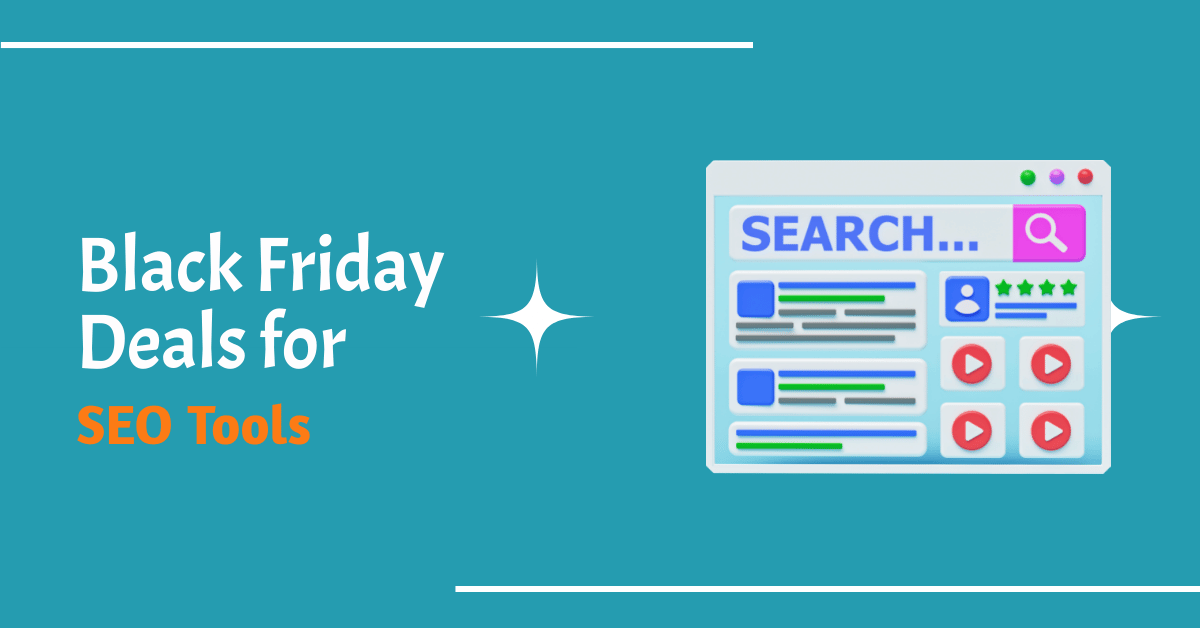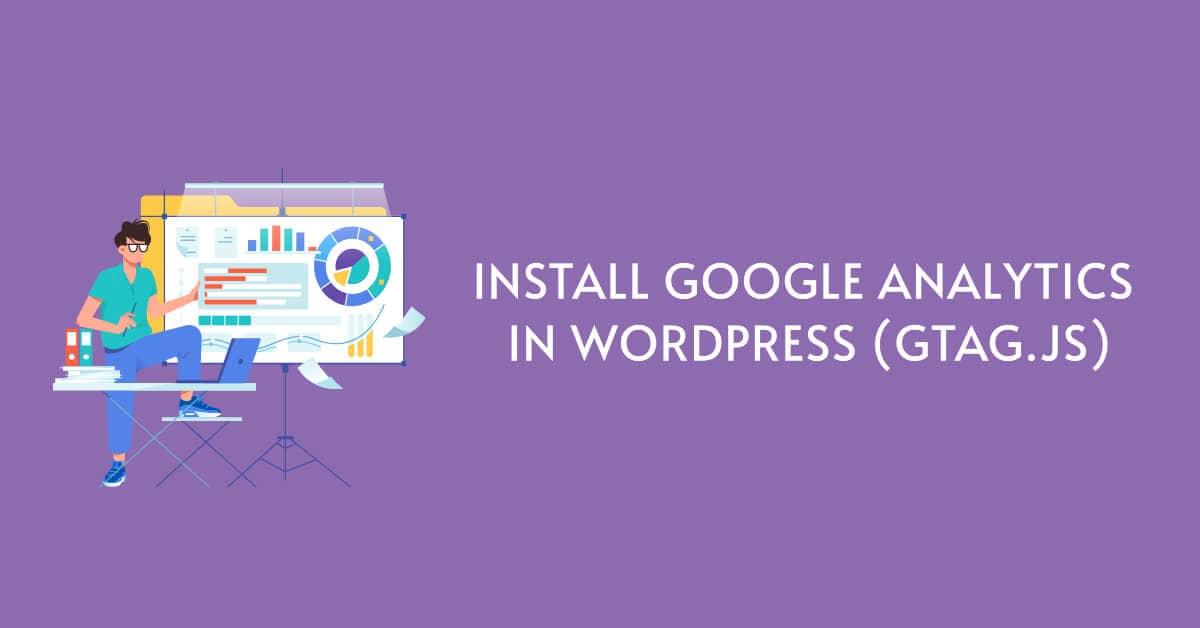Shopify is an ecommerce software that allows you to create an online and offline store. WordPress is used by bloggers. Shopify is used by store owners. This ecommerce website builder provides features for everybody from newbies to ecommerce professionals, and it lets you sell both online and in real life with Shopify POS. Now let’s get into the pros and cons, features, pricing and more to get a good idea of this platform.
Setting Up a Shopify Store
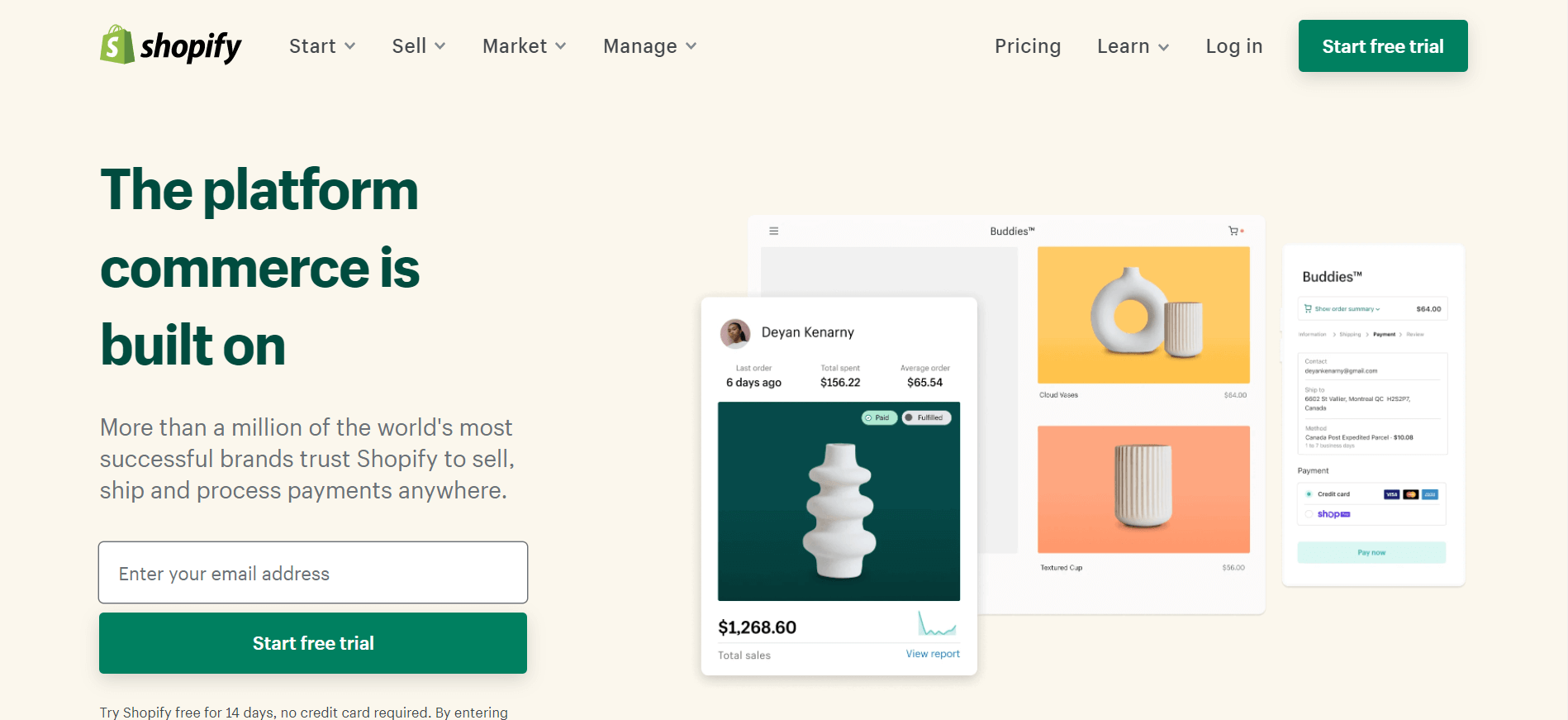
It’s simple to get a shop up and running using Shopify. Shopify calculated my rate of tax and currency depending on my specific address after I registered an account using an email address and password. My store’s name was also utilized to generate a unique URL for my dashboard: super-fun-tech-shop.myshopify.com. This way, especially if you’re not using your own domain yet, you may view the store online right immediately.
The dashboard would be where you do all of your tasks, and it’s simple to use. Existing orders, product inventories, and customers may all be seen in various ways. To expand my business’s capabilities, I can easily integrate third-party ecommerce tools like recurring payment and loyalty programmes, and the theme shop has easy-to-use and beautiful designs.
There are plug-ins for outside sales channels on social networking sites, accounting tools, help desk techniques, and even accessibility to other merchants available in the app store. Be warned that adding these features to your account may result in a significant increase in your monthly price. Before you choose an add-on, double-check all payment details. If you believe you’ll require a lot of third-party extensions, look into some of the other players in the industry to see what you’ll need, who can supply it, and how much they’ll charge.
Shopify provides 11 distinct categories of free, beautiful, and modern-looking themes, including Accessories, Art, Electronics, Home, Clothing, Food, Books, and Other. These are some of the most attractive shop themes I’ve ever seen; the free templates, for example, are superior to those available through 3dCart. I looked through the themes and tried out the Demo buttons to see how the whole page would appear. I clicked Publish to add a theme to my account after I was satisfied with it.
I was happy with the customization options, but if you want anything more complex, the Shopify Theme Store offers over 100 free and paid layouts. Because some premium themes might be rather costly, keep an eye on your overall monthly price.
Shopify saves your previously used templates in your profile so that if you change your opinion, you can go back to the earlier one by scrolling down the Themes tab in the dashboard. A built-in drag-and-drop editor allows you to change the theme, and a built-in text editor allows you to edit the HTML/CSS.
Inventory webpages and order forms aren’t the only parts of an online business. You also want your customers to be able to get the information they require. Shopify allows you to establish a blog, as well as dynamic pages like About Us and FAQ pages, to connect with consumers. My Google Analytics (GA) tags for site metrics were also integrated. You may collect client information through user accounts, which consumers can utilize to check order progress or join a loyalty programme.
Shopify lacks an integrated email marketing tool, which I believe is a major flaw. It does, however, have a tool called Kit, which is a digital advertising assistant that can help you design Facebook and Instagram advertisements as well as send a few pre-formatted emails, like “Thank You” auto-responders.
I had the option of using an existing site or establishing one with Shopify and having the business function as my domain registrar. Prices start at $14 per year for popular names like.com and.net, $14 per year for a few nation domains, and $46 and above for bespoke domains. For my evaluation, I utilized an existing domain. Shopify provides detailed instructions for setting up your domain’s DNS records to link to Shopify’s servers. I could just use the free Shopify-generated URL and skip the personal domain altogether.
Inside the 14-day free trial, I was able to set up my shop. As my final step, I chose the Basic plan to activate my store and launch the site. Keep in mind, however, that the Basic plan lacks several useful features, such as gift cards. Make sure to thoroughly review the Shopify feature list to ensure that your site has everything you want.
Shopify Features
1. Comprehensive Shopify Admin
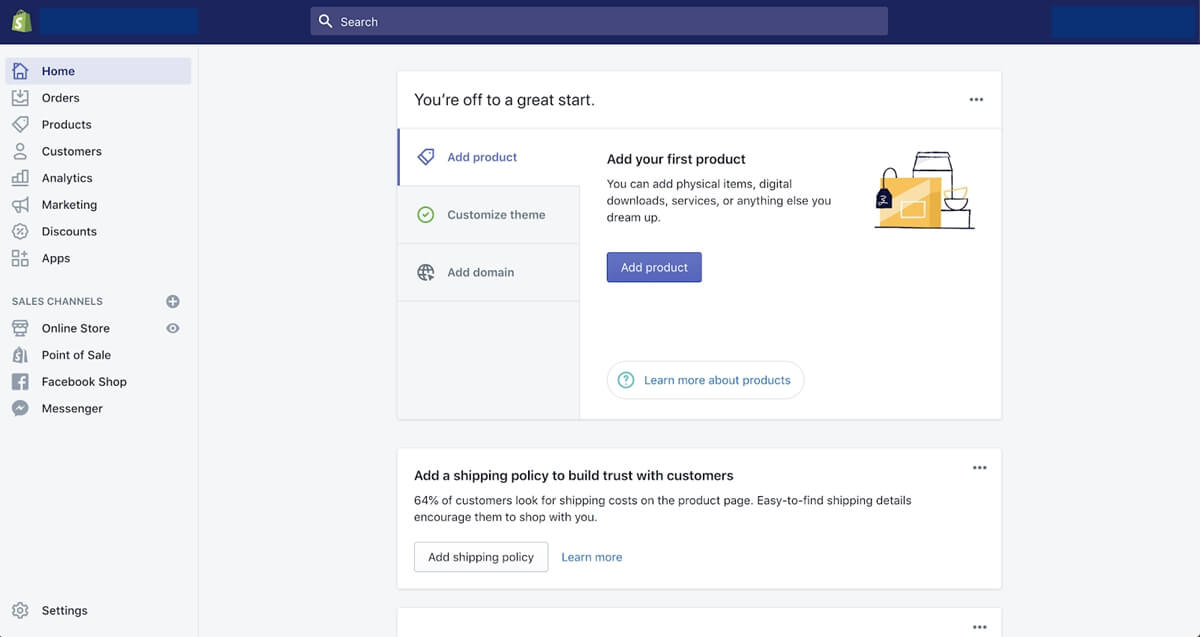
You’ll discover a variety of data and tools in the backend of your Shopify site that will help you to understand whether your online business is functioning. At a glance, you can see how many orders there are. You’ll be able to locate your top-performing product pages. You may also have a real-time view of your website visitors to determine where they are in the process. Shopify is a comprehensive platform for online retailers that allows you to gain an in-depth grasp of all of the specifics of your online business.
2. Complimentary Features
If you’re creating a new website, you’ll almost certainly need to pay for a theme (the look and feel of your site). On the other hand, Shopify instantly loads a free theme onto your store, which you can begin customizing in any manner you want. This is why Shopify is great for novices who want to jump right in and explore the possibilities. You may also personalize your website to match your corporate identity. You may modify the colour scheme, add your images, and more using free fonts (which are already loaded on your shop). You may also select from thousands of ecommerce-themed stock images taken by Shopify freelancers.
3. Shopify is connected to the internet through a cloud network
My favorite benefit of switching from WooCommerce to Shopify was that my website will be hosted on a cloud network rather than a server. Anyone who has ever charged for a web server knows that they frequently crash at inconvenient times, causing you to lose a significant amount of money due to downtime. Servers frequently collapse on Black Friday and other major occasions.
When using a shared server, you have to assume that the other websites aren’t as famous as yours. Because you’re on a cloud network, the chances of your website being down are slim, enabling you to focus on running your business. This amount is included in your membership, so you don’t have to worry about it.
4. There’s a strategy for everybody
Let’s face it, there are expenses that come with owning a business. You’ll have to pay for items, marketing, a new domain, and Shopify, among other things. Shopify, on the other hand, provides a price plan for everyone. If you’re on a limited budget, Shopify Lite is available for only $9 per month. Shopify Plus is a white-glove service that you may employ if you need it. You may also go through the plans as your company expands.
5. There are a plenty of apps to choose from
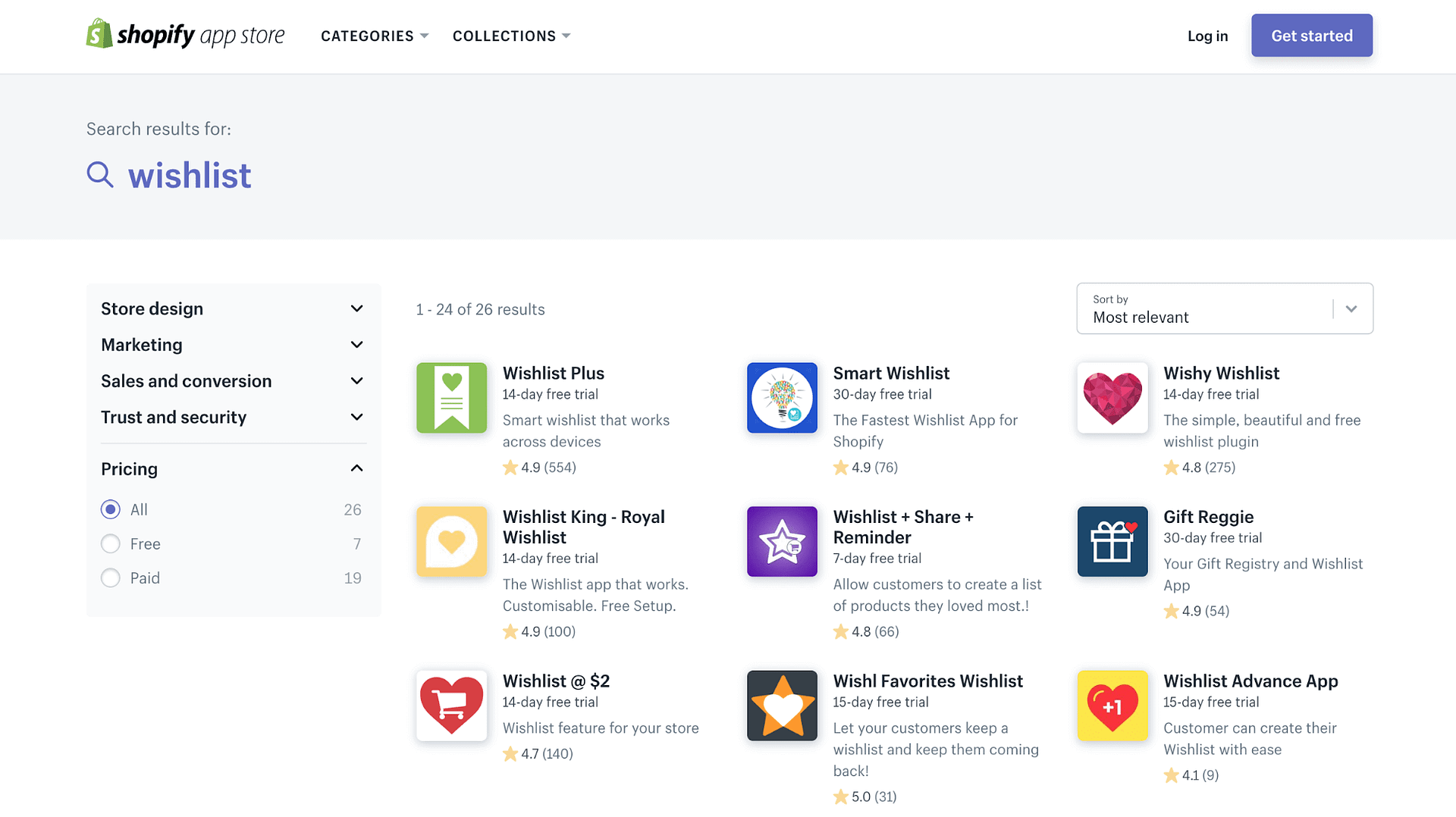
In the Shopify App Store, there’s an application for nearly everything. Countdown clocks, picture backdrop removers, and product sourcing applications are all available.
6. A Great Deal of Support
If you’re still undecided about Shopify, the company’s level of assistance should be enough to persuade you. Shopify is invested in your success on their platform. That’s why they have their own blog, where ecommerce professionals share their most effective strategies. That’s why Shopify Academy was developed, where you can attend free ecommerce courses at your own speed.
That is why they have a large number of customer service representatives that will gladly answer any queries you may have. There are also Facebook Groups set up by Shopify users that wish to assist new business owners. Shopify has a huge support network. Someone is always eager to assist you in your development.
You May Like: Booster Theme Review and Debutify Theme Review
7. Low Entry Barrier
A Shopify store may be started by anybody. It will not be simple. But it’s a lot simpler now than it was 20 years ago to start an internet business. Did you know that when Amazon initially started, individuals had to send checks to the company? Those days are long gone. And the fact is that starting an internet business will get much easier as time goes on. Shopify is at the forefront of efforts to remove ecommerce obstacles. When you compare Shopify to other platforms, it’s easy to see why lots of companies choose it every year.
8. A Learning Curve Exists
When you create a Shopify store, you’re creating a business rather than a passive revenue source. And launching a business isn’t always straightforward. It takes months of trial and error to figure out how to utilize Shopify and create a lucrative store. It might take some time to figure out where each area of your business is in the admin. However, Shopify is, for the most part, user-friendly. All it takes is a little practice.
9. Shopify Isn’t Enough to Ensure Your Success
Shopify offers so many amazing features and applications that it’s far easier to manage an online business with it than it is to develop something unique from the ground up. The issue is that it is entirely up to you to ensure that your shop is a success. You must have a mentality that encourages you to learn. To advertise your business better than its rivals, you’ll require marketing skills. Your achievement, not Shopify’s, is in your control.
Shopping Cart Packages
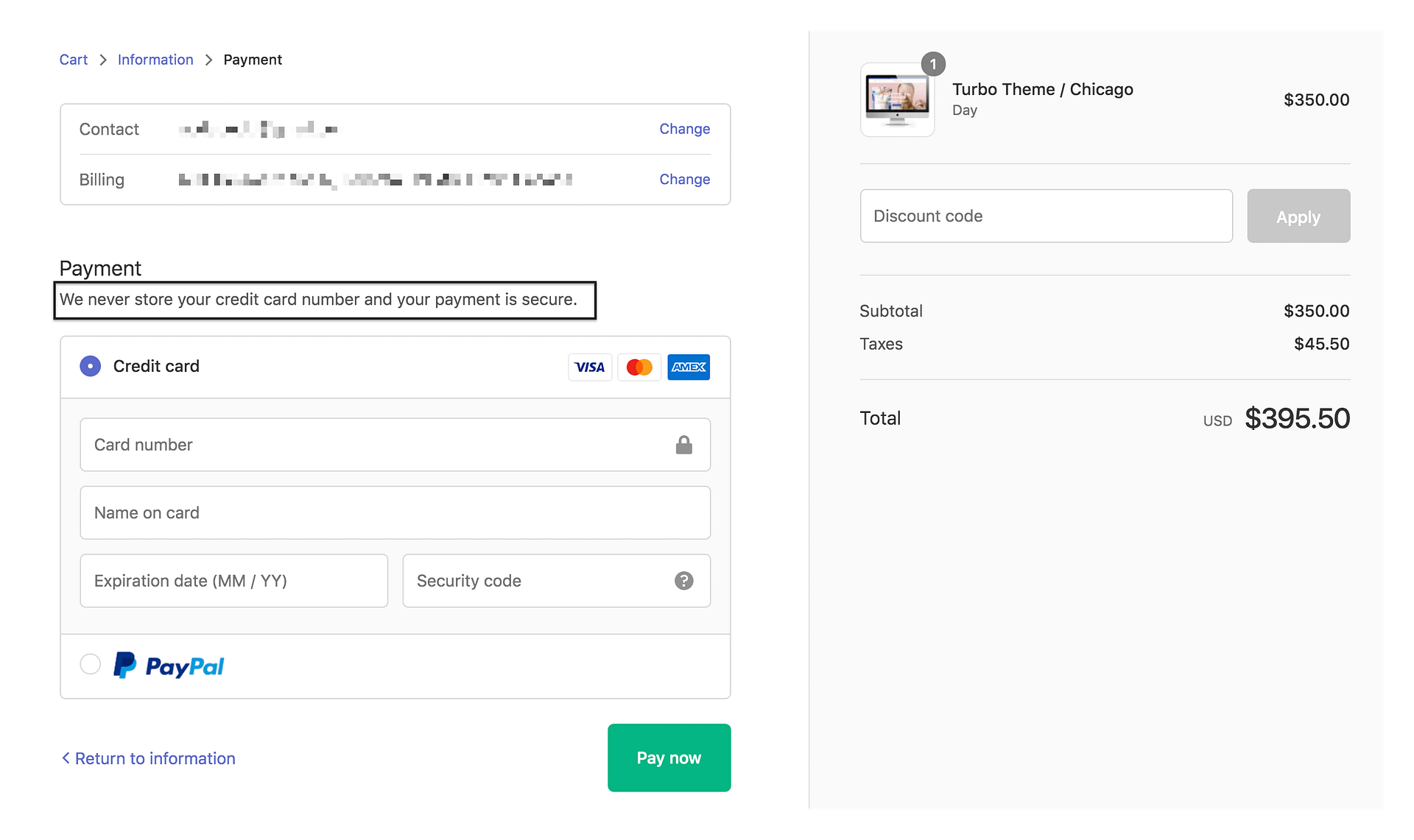
Users may sign up for a 14-day trial of Shopify, which allows small companies to set up a shop and test purchases before investing in the platform. All major credit cards are accepted by Shopify. 3dCart, a competitor, provides a 15-day trial.
Shopify provides five different options, starting at $24 per month for selling items on your current website or social networking sites. If you utilize Shopify’s ecommerce channel, the Basic plan is $24 per month with no transaction costs. Unlimited goods and storage, 24/7 support, a site and blog, an SSL certificate, and 2 staff accounts are all included in this package.
The $79 per month Shopify plan adds three extra staff accounts, reporting, and empty cart recovery to the Basic plan. The Advanced Shopify plan costs $299 a month and features 15 staff accounts, an extensive report builder, and the ability to calculate auto-shipping rates. Shopify now provides a custom-built, enterprise-grade Plus plan with bespoke pricing.
Transaction fees are not charged by all shopping cart solutions. Alternatives that do not charge include 3dCart and Pinnacle Cart. However, bear in mind that transaction costs will be charged by any merchant account and online payment you use with those services.
The advantage of Shopify is that it takes care of everything for you, saving you from having to deal with merchant accounts and their associated fees. If you determine you don’t like Shopify and don’t select a price plan during your trial period, your account will be locked and you will not be charged after your trial ends.
Customer Experience and Payments
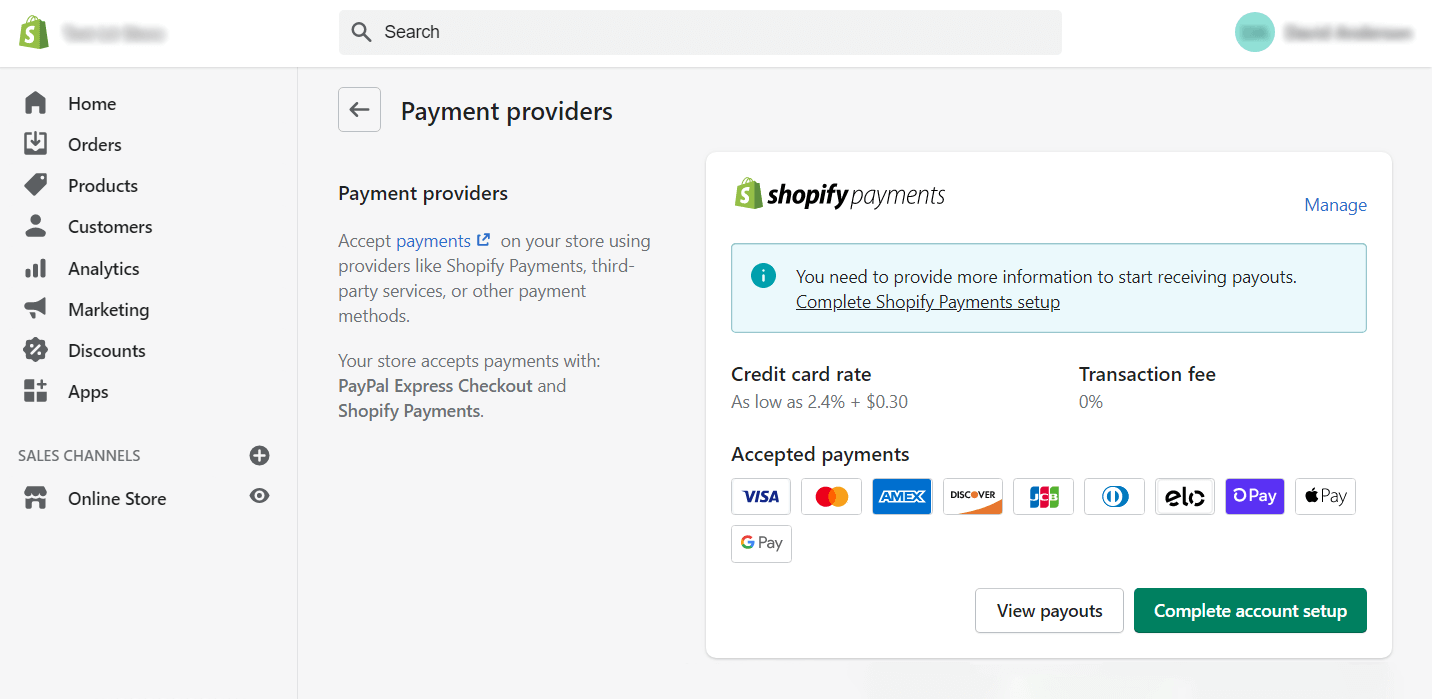
The simplest shopping cart software is useless if customers have trouble finding items and paying for them. As a buyer seeking to buy a product and as a seller handling the transaction, I considered the user experience (UX) to be simple and smooth. There was no Shopify advertising on the site, providing me with a uniform user experience.
Shopify Payments and PayPal Express Checkout are the default payment gateways for Shopify. It can also interface with 70 additional payment gateways if that isn’t your cup of tea. I put up PayPal for this report. It’s also worth noting that PayPal has its own credit card processing fees.
If you utilize Shopify Payments, the transaction costs are waived. If you wouldn’t want to engage with Shopify Payments, 3dCart and BigCommerce are fantastic options that don’t impose transaction fees.
Shopify now accepts payment methods based on cryptocurrency and other alternative currencies, as well as checks, money orders, and bank deposits. If you don’t want Shopify to charge consumers credit cards periodically, you may have the shop only authorize payments and bill the card explicitly when you’re ready. Shopify has a website that explains the difference between automated and manual payment collection in great detail.
Excellent Customer Service
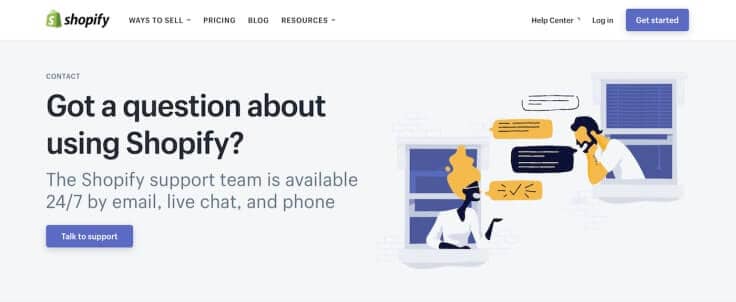
As I previously stated, Shopify allows you to utilize the same platform for both online and offline sales. You may also embed a Buy button on another website, which is handy if you wouldn’t want to utilize Shopify’s site builder tool.
The manual is simple to use, and there is mail support as well, but Shopify also provides 24/7 phone and chat-based assistance if emailing isn’t enough and you need assistance. A lively discussion forum is also available. Even at 1 a.m., I was able to connect with someone via chat, and the support number agent was quite helpful in addressing my questions regarding the many choices offered in each package.
Great Shopping Right Out of the Box
When it comes to putting up an online business, simplicity is crucial. Customers don’t want to jump through so many hoops to pay you money, and sellers don’t have a lot of time to understand how to use the programme. With basic functionality and the opportunity to fine-tune features later, Shopify makes it simple to get started. Because of its simple and easy-to-navigate interface and ease of use for first-time businesses, Shopify is our pick for shopping cart software.
FAQs on Shopify Review
-
What is the purpose of Shopify?
Shopify gives you everything you need to start an online business. When you start selling online, you’ll need to set up a storefront, display items, interact with consumers, collect payments, and more. Shopify has all of the tools you’ll need to keep track of each of these tasks. Consider Shopify’s platform as a facilitator that streamlines the process of selling items online.
-
How much does Shopify cost you?
The basic plan costs $29 per month, the main plan costs $79 per month and the advanced plan costs $299 per month.
-
Is Shopify a reputable company?
Yes, Shopify is completely secure and legitimate. Shopify has launched several tools to assist ordinary people in creating their own online retailer since its humble origins in 2006. Set up, create, and administer your ecommerce store across various sales channels, like mobile, online, social media, and marketplaces, using the platform.
-
Is Shopify suitable for newcomers?
Absolutely! Shopify is designed in such a manner that even novices and non-techies may utilize it without difficulty. The portal already has a store structure built up, so all you have to do now is add the remaining items (theme, products, etc.) to have your shop up and running. Anyone may use Shopify to create an online business, from university students to retirees.
Conclusion
Shopify is the most popular e-commerce platform, and it comes with all of the tools you’ll need to get your new e-commerce business up and running right away. It’s better to use this ecommerce platform to establish your own online retailer and see it for yourself. Shopify is the finest platform for online businesses if you want to generate money online. Benefit from a free trial and see for yourself what all the fuss is about. Shopify’s mission is to improve trade for everyone, therefore it might be the ideal platform for you.
Shopify Review

Shopify is an ecommerce software that allows you to create an online and offline store. This ecommerce website builder provides features for everybody from newbies to ecommerce professionals, and it lets you sell both online and in real life with Shopify POS.
Product Brand: Shopify
Product Currency: USD
Product Price: 24
Product In-Stock: InStock
4.59
Pros
- Easy To Use
- Available Customer Support
- Multiple Payment Methods
- Multiple Payment Processor
- Apps and Plugins
Cons
- Pricing
- Difficulty With Content Marketing
- Limited Customization
- No Email Hosting



